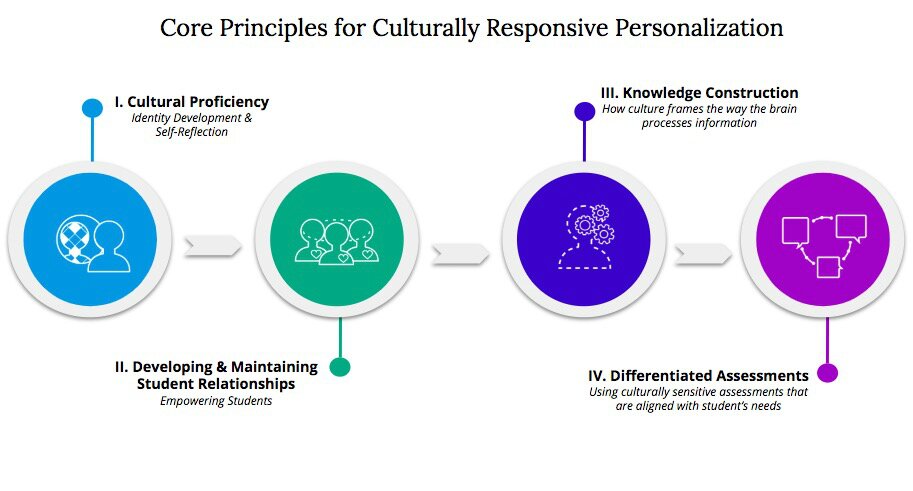Our Blog
CCE staff and partner reflections on our collaborative work to create schools where learning is engaging and rewarding, and every student is set up for success.
“Equality is everybody having a pair of shoes. Equity is providing everyone a pair of shoes that fit.” -Enid Lee
Geneva Gay, a professor of education at the University of Washington-Seattle, defines Culturally Responsive Teaching (CRT) as “the ability to use the cultural characteristics, experiences, and perspectives of culturally and linguistically diverse learners as conduits for teaching them more effectively.” Using student’s cultural characteristics in daily teaching practices will allow educators to better connect and build solid relationships with their students. By acknowledging student’s multiple identities, teachers support the development of students’ attitudes toward learning and the habits necessary to succeed in life.
As a starting point to help teachers become a more effective culturally responsive and equitable leader, I’ve developed four core principles of culturally responsive personalization. Remember, you cannot begin to personalize learning if you do not include students’ identities at the forefront of your work.
This four step framework, grounded in theory and research, can support the implementation of CRT practices in the classrooms to successfully develop and tailor instruction to the unique need of all diverse learners.

The first principle of this framework is Cultural Proficiency. In order to understand our students, we must understand our own identities. It includes acknowledging that our life experiences, values, assumptions, and identity influence the way we see the world around us. It is during this process that teachers have the opportunity to self-reflect to gain a deeper understanding of how their identity impacts their own attitudes and teaching practices. Once a teacher can understand their own culture, they can develop the characteristics needed to effectively teach their students who may have a different cultural background.
The second principle is dedicated to developing and maintaining student relationships by empowering their cultural identity. If teachers start the school year by building a responsive classroom community and understanding who their students are, where they come from, and how they learn, then they can begin to build trusting relationships.
The goal during this process is that teachers understand how their own experiences and backgrounds impact their day-to-day practice in the classroom and how they can utilize this to embrace and accept all students. The teacher can then leverage students’ cultural identities to create units and curricula that reflect students’ passions. Additionally, teachers will begin demonstrating cultural caring and building a strong learning community. Educators must gain and demonstrate a strong understanding of how relationships are the cornerstone of culturally responsive teaching and personalized learning.
For the third principle, Knowledge Construction, teachers explore the science behind culture and how it impacts and frames the brain. Teachers should make information meaningful and accessible to all students. When you help students think about how they think, it helps build neuroplasticity which helps create more neural pathways. It is important students activate their prior knowledge or schema so they can begin making connections and creating new knowledge. By understanding students’ cultures and experiences, teachers develop skills to use cultural scaffolding and help students achieve. So, when folks say that students don’t have the capacity to learn or “they can’t”-- it is simply not true. We’re just not reaching and connecting with students to impact their attitudes and behaviors.
The fourth principle, Differentiated Assessments, explores the connection between strong learning partnerships and effective use of culturally sensitive assessments to close learning gaps. Teachers also gain an understanding of how to use a variety of instructional and formative assessment strategies to meet the needs of a diverse group of students.
While exploring and using these four principles, teachers will develop a stronger understanding of their identity and a clear vision on how to engage with students in a culturally responsive way. By using culturally responsive personalized practices, teachers will be able to develop instruction that meets the needs of all learners. Most importantly, they will be able to develop healthy and solid relationships with their students to help them acquire the skills they need to succeed in the classroom and the world beyond.